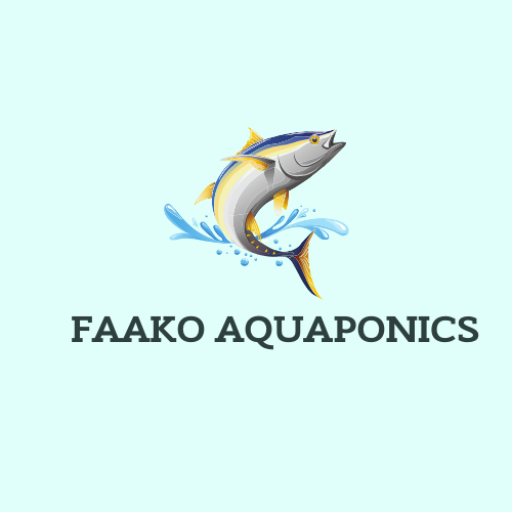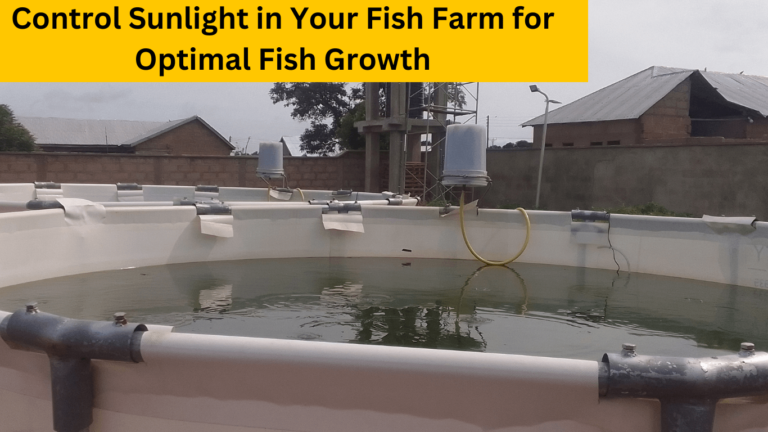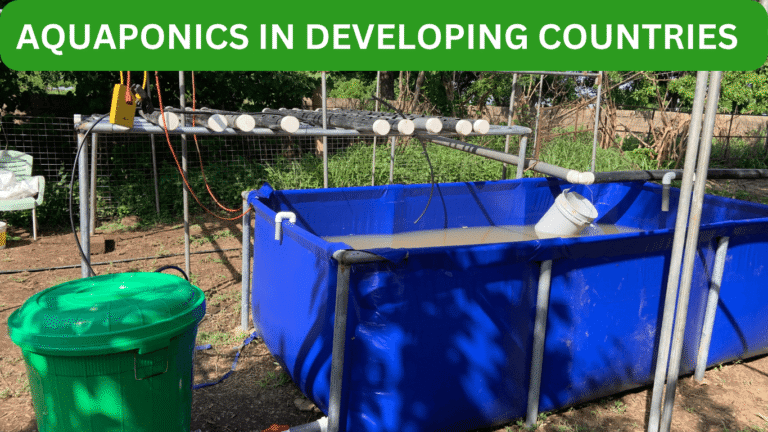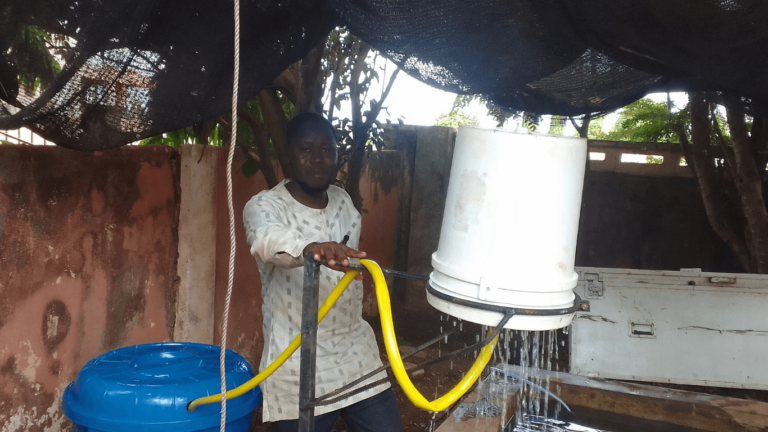How to control sunlight in your fish farm is very crucial to learn as a fish farmer since maintaining the right balance of sunlight in your fish farm is crucial for the health and growth of your fish. While sunlight is essential for natural biological processes, excessive exposure can lead to several issues that negatively impact fish health and productivity.
In this article, we will explore why controlling sunlight is important, the effects of excessive sunlight, and the best methods to provide adequate shade for your fish pond. We shall generally look at how to control sunlight in your fish farm for optimal fish growth.
Why Sunlight Control is Important in Fish Farming
Sunlight plays a significant role in fish farming by supporting algae growth, regulating water temperature, and promoting natural processes. However, too much sunlight can create unfavorable conditions that stress the fish, affect feed conversion, and reduce overall productivity.
Effects of Excessive Sunlight on Fish Farms
- Increased Water Temperature
- When the sun is too intense, it raises the temperature of the water in your pond. Excessive heat makes it difficult for fish to swim comfortably, leading to stress and lower survival rates. More especially if you are using the tarpaulin fish pond. It absorbs heat faster. Even if the pond is a large one with adequate water in, is even better. For instance, I once experience hot water in the pond leading to stress and mortality because I harvested the fish leaving some fish in the pond and didn’t top up the water planning to continue harvesting the next day. And because I reduced the water leaving small, it became hot during hot afternoon and affected the fish
- Poor Feed Conversion Ratio (FCR)
- High temperatures reduce the fish’s appetite. When fish eat less, their growth rate slows down, making feeding at peak sunlight hours inefficient and wasteful. That is why is not ideal to feed your fish when the temperature is high. Feeding them in the morning and evening when is cool is better.
- Decreased Oxygen Levels
- Excessive heat reduces the dissolved oxygen levels in the water. Low oxygen levels make it harder for fish to breathe, leading to increased mortality rates.
- Algae Overgrowth
- Prolonged sunlight exposure can promote excessive algae growth, which can deplete oxygen levels and release harmful toxins into the pond, further endangering fish health.
Best Methods to Control Sunlight in Fish Farms
To ensure a balanced environment, fish farmers must implement effective shading techniques. Below are the best ways to control sunlight in a fish farm:
1. Installing Shade Nets
One of the most effective ways to manage sunlight exposure is by using shade nets. These nets come in different thicknesses and levels of coverage:
- Thick shade nets: Provide near-complete coverage and significantly reduce sunlight exposure. As the name suggest, is thick therefore providing total shade.
- Light shade nets: Allow some sunlight to pass through while reducing excessive heat. In this case you can adjust the lighting system.
The ideal approach is to use a light shade net that allows partial sunlight, ensuring your fish still benefit from natural light without suffering from excessive heat.
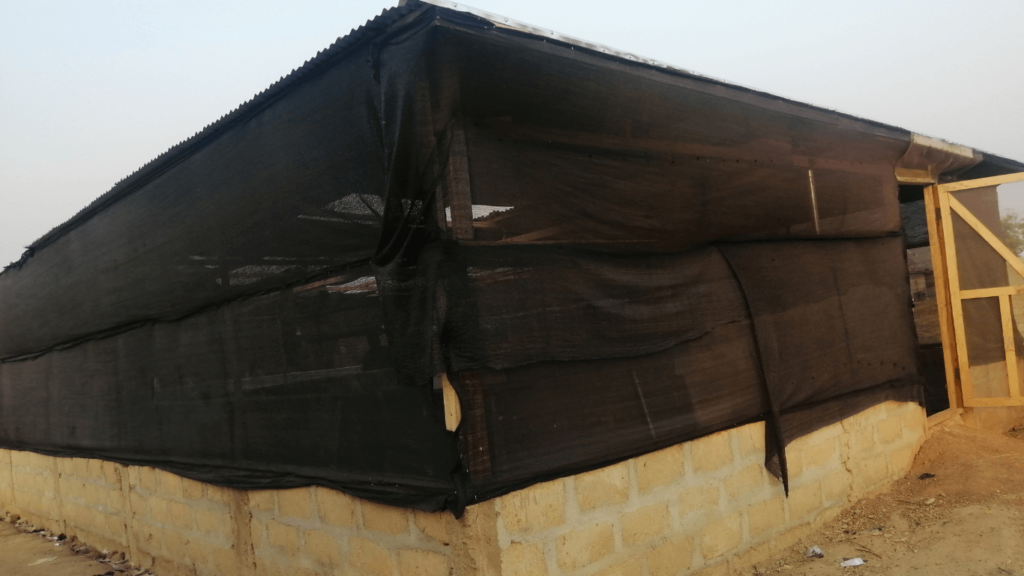
2. Using Zinc Roofing for Partial Cover
Another common shading technique is installing zinc sheets over the fish pond. To ensure a balance, leave spaces between the zinc sheets to allow some sunlight penetration. This prevents overheating while maintaining adequate light for biological processes in the pond.
3. Planting Trees for Natural Shade
Trees can provide excellent shade for fish ponds, but they come with some challenges:
- Falling leaves can accumulate in the pond, decompose, and degrade water quality.
- Decomposing organic matter can lead to oxygen depletion and increased water contamination.
To counteract this, consider installing a net above the pond to catch falling leaves before they enter the water.
4. Combining Shade Nets and Zinc Sheets
For optimal results, a combination of shading methods can be used:
- Place a light shade net around the pond.
- Install zinc sheets overhead but leave gaps to allow some sunlight.
- Use additional protective netting if trees are present nearby to prevent leaf litter from entering the pond.
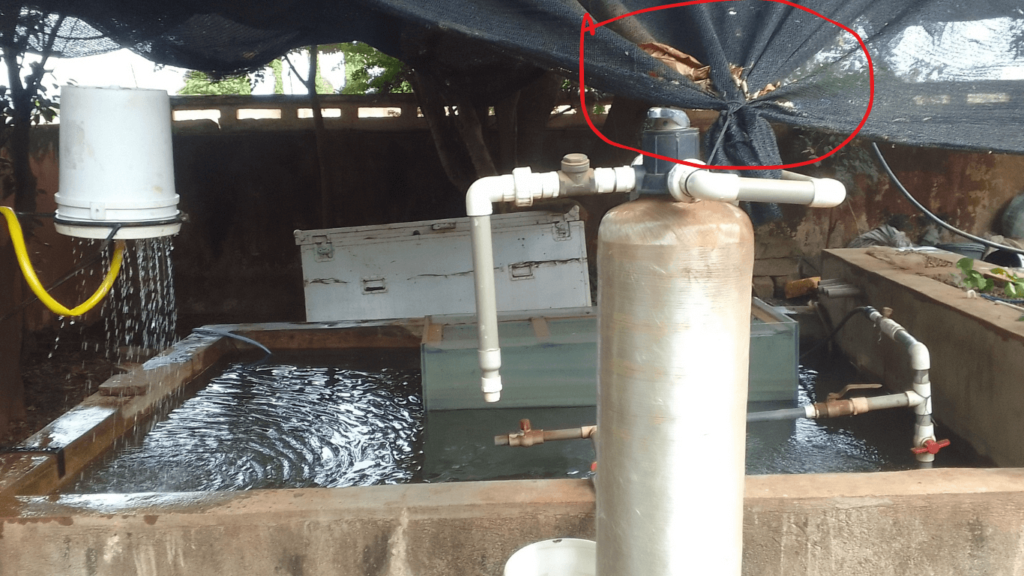
Trees and Shade Net Together and the Shade Net traps leaves
5. Using Artificial Canopies and Structures
If you do not have access to natural shading elements, installing artificial canopies made of UV-resistant materials can be a viable solution. These structures can be customized to allow partial sunlight while keeping excessive heat at bay.
6. Covering Fishpond With Natural Grass
One of the cheapest ways is to cover your fish pond with natural grass. You can erect poles and put them on. I visited a fish farm where the farmer does that. It is cost-effective and easy to do.
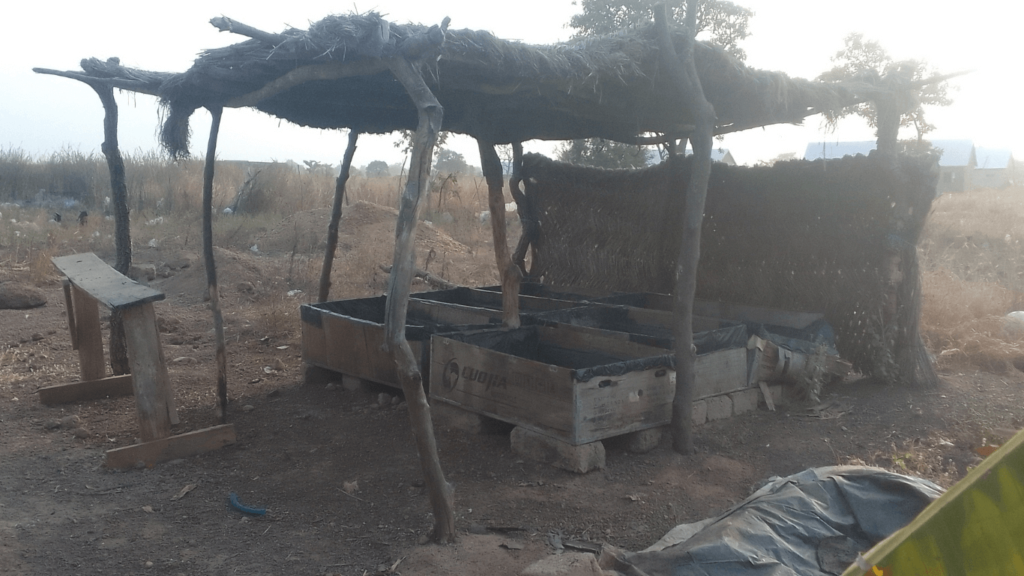
7. Positioning Your Pond Strategically
When setting up a fish farm, consider the orientation of the pond. Ponds positioned in areas with natural wind flow can help regulate temperature and oxygen levels. Additionally, placing ponds near existing structures can help provide partial shade.
Note: When we say the fish need sunlight for other purposes, it is not necessarily the direct sun ray. The light from the sun may be adequate. For instance, I visited Alhaji Amaru’s fish farm in Tamale, Northern Ghana. I realized he had a complete cover of the pond with both trees and shade nets leaving no room for sun rays. I told him in my research I came across the information that the fish need sunlight but he has covered it completely? He is an experienced old farmer. He laughed and told me it is true but it doesn’t mean the direct sun rays. Once the light from the sun comes in, it is okay. And obviously the fish were doing well in the pond.
Additional Tips for Managing Sunlight in Fish Farms
- Monitor Water Temperature Regularly: Use a thermometer to check temperature fluctuations and adjust shading accordingly.
- Adjust Feeding Schedule: Feed fish during cooler parts of the day, such as early morning or late evening, to improve feed intake and conversion rates.
- Maintain Proper Aeration: Ensure adequate oxygen levels by using aerators, especially in warmer conditions.
- Keep Water Clean: Regularly remove debris and excess organic matter to maintain high water quality. This can be achieved by using the Recirculating Aquaculture System (RAS)
- Use Floating Plants: Introducing floating plants like water lilies, Azolla or duckweed can help provide natural shade and improve water quality.
- Install Cooling Systems: In extreme heat conditions, consider using water cooling techniques such as misting systems or sprinklers to maintain an optimal water temperature.
Conclusion
Controlling sunlight in your fish farm is essential for maintaining a stable and productive environment. Excessive heat can stress fish, reduce feed efficiency, lower oxygen levels, and promote harmful algae growth.
By using shade nets, zinc roofing, tree cover, or a combination of these methods, you can create the perfect balance of sunlight for optimal fish health and growth.
To proper leaning of how to control sunlight in your fish farm and more expert tips on fish farming, check out our Comprehensive Guide To Fish Farming: From Setup to Harvest here. Investing in the right knowledge and practices will take your fish farming business to the next level
